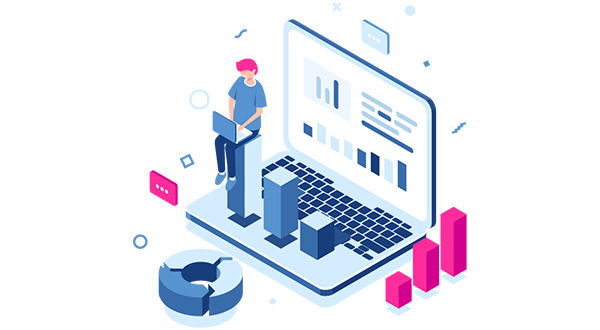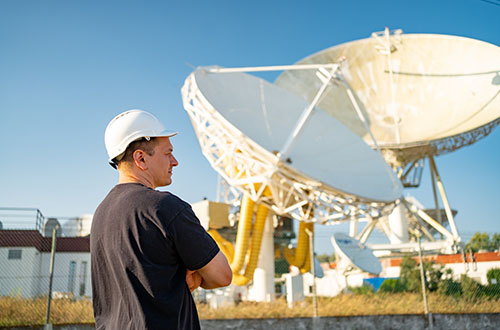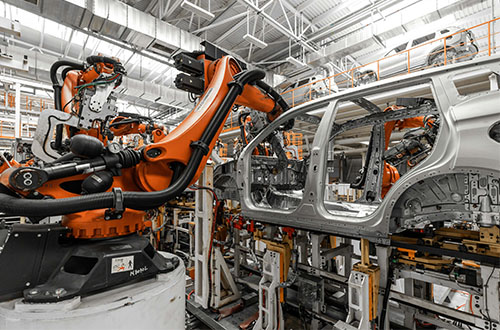

Tackling the IRS' Tech Troubles

The mLogica Migration Team
Trends and Technologies
The Internal Revenue Service (IRS) sits at the core of America’s financial infrastructure, processing trillions of dollars in tax transactions annually. Yet, beneath this massive responsibility lies a troubling reality, much of the IRS’s technological infrastructure is severely outdated, straining under the weight of legacy systems that are as old as 64 years. According to the 2023 GAO Report, 33% of IRS applications, 23% of its software, and 8% of hardware still run on legacy technology. This outdated tech not only hampers operations but also puts taxpayer data at serious risk.
This Legacy Burden is a Roadblock to IRS Efficiency
At the heart of the IRS’ technological problems is the Individual Master File (IMF), a 60-year-old system that stores and manages taxpayer data. This system, still powered by archaic programming languages like COBOL and Assembly, is not only difficult to maintain but nearly impossible to evolve in a digital-first world. With modernization plans for CADE 2 (the intended IMF replacement) delayed well into the next decade, the IRS is left grappling with an uncertain path forward.
Outdated systems mean more than sluggish performance, they represent major cybersecurity vulnerabilities. Without real-time data analytics and modern security protocols, taxpayer data is increasingly exposed to breaches. Furthermore, the scarcity of skilled professionals capable of working on these legacy systems only exacerbates the problem. As a result, the IRS is struggling to maintain core functions while innovation and efficiency take a back seat.
Additionally, current manual rewrite of legacy code projects are running years behind schedule and millions of dollars in cost overruns.
How Legacy Systems Cripple IRS Performance
The continued reliance on obsolete technology has a domino effect across the IRS:
- Cybersecurity Risk: Legacy systems cannot keep pace with modern threats, endangering sensitive taxpayer data.
- Limited Real-Time Capabilities: Incompatible platforms prevent fast decision-making and reduce fraud detection effectiveness.
- Soaring Costs: Legacy maintenance eats up budgets that could be used for innovation.
- Skilled Staff Shortage: There’s a shrinking pool of professionals proficient in Assembly and COBOL.
- Sluggish Modernization: Bureaucratic hurdles and aging infrastructure delay upgrades.
- Operational Instability: Aging systems face frequent outages, threatening tax processing and public trust.
Modernizing the IRS is a Call to Action
To solve these issues, the IRS must undergo a deep, comprehensive transformation, one that begins with understanding the full scope of its technology landscape. What is needed is advanced technologies to accelerate their modernization efforts. That’s where partners like mLogica come in.
mLogica, a global leader in legacy system modernization, has been instrumental in transforming large-scale government and enterprise IT infrastructure. Their approach is not just about replacing old systems, but about doing it fast, safely, and cost-effectively using AI-driven software.
From Assembly to Java: Modernization That Works
mLogica’s unique value lies in its AI-enabled automated code conversion, which drastically reduces the time and cost associated with manual rewrites. While manual rewrites are notoriously error-prone and slow, failing 90% of the time, mLogica’s tools can handle millions of lines of code, converting legacy applications to modern platforms like Java with remarkable speed and accuracy.
This approach ensures:
- Faster Implementation: Migrations that once took decades can now be done in months.
- Lower Costs: Automation trims costs significantly, freeing up budget for innovation.
- Retained Business Logic: Critical IRS rules and processes are preserved.
- Reduced Risk: Automation catches hidden bugs and obscure legacy code.
- Future Scalability: Modern systems are more adaptable to new technologies and data volumes.
A Proven Path to Transformation
mLogica’s roadmap for IRS modernization is grounded in proven methodology:
- Deep Assessment: Evaluate all legacy systems, upstream and downstream applications, dependencies, and security risks using mLogica's proprietary assessment software
- Proof of Technology: Pilot convert a small segment of code (e.g., part of the IMF) to demonstrate viability and performance gains
- Pilot Migration: Migrate a key IRS function, such as taxpayer data management, using advanced automated software
- Full Transformation: Modernize the IRS’ ecosystem, moving to a hybrid cloud and/or cloud environment
The Results Speak for Themselves
Organizations across industries have turned to mLogica to modernize legacy systems.
- A major European financial institution undertook a complex transformation of its Unisys mainframe environment, which had supported critical check payment systems built on DMSII databases and Algol libraries. The modernization effort involved converting legacy COBOL code to Java and translating WFL scripts to Perl, ensuring seamless integration with modern job schedulers. By leveraging automation and enhancing tools to accommodate business-specific logic, the institution successfully migrated to a Linux-based open platform. This strategic shift eliminated vendor lock-in, reduced infrastructure costs, and enabled more flexible, scalable operations.
- A North American financial services company embarked on an aggressive mainframe modernization journey using mLogica’s automation framework to replatform legacy COBOL and Assembler programs to C#.NET, while converting JCL scripts to PowerShell. Completed within three months, the initiative delivered enhanced operational agility, reduced technical debt, and positioned the organization for future innovation. The resulting environment was both scalable and cost-effective, ensuring long-term sustainability.
- A U.S. state government agency embarked on a digital transformation by migrating its entire technology stack from IBM IMS to Db2. The agency utilized mLogica's automated migration tools to assess existing IMS programs, generate target DDL, and create bridge programs, ensuring minimal disruption to existing applications. Comprehensive testing validated performance and functionality equivalence, while mLogica provided full technical support throughout the cutover and post-go-live phases. This modernization effort led to accelerated service delivery, improved business processes, and significant cost efficiencies.
- A European government agency, employing over 45,000 personnel, faced challenges with its IBM mainframe systems running z/OS and applications developed in COBOL, Pacbase, and Assembler. To modernize, the agency leveraged mLogica's modernization software to recompile and migrate applications to a Linux-based open environment, emulating z/OS CICS functionalities. Data stores, including Db2 and IMS, were transitioned to PostgreSQL, and legacy job scheduling tools were rewritten for compatibility. This strategic move resulted in significant cost savings, reduced dependency on specialized mainframe skills, and enhanced system flexibility.
- A major financial services provider faced the challenge of modernizing outdated Easytrieve routines and JCL scripts that were deeply embedded in its mainframe infrastructure. Leveraging automation, the company converted nearly 500 Easytrieve routines and a similar number of JCL components into COBOL, ensuring compatibility and improved maintainability. This effort removed critical legacy dependencies, significantly reducing support costs and improving system agility. The modernization streamlined operations while preserving essential business functionality across mission-critical workloads.
A Future-Ready IRS Is Within Reach
The challenges facing the IRS are significant, but they are not insurmountable. What’s needed now is bold, decisive action, starting with a comprehensive assessment and the decision to embrace advanced modernization automation and AI.
With mLogica’s help, the IRS can finally move past its legacy tech burden and step into a future where taxpayer data is secure, fraud is caught in real-time, and services are delivered faster and more reliably. It’s time to stop patching old problems and start building a modern tax system that meets the needs of the 21st century.








































